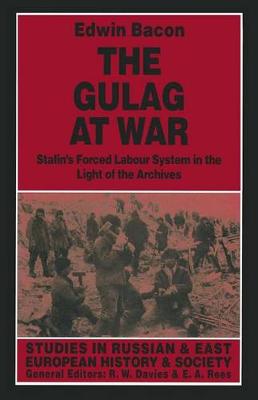Studies in Russian and East European History and Society
1 total work
Throughout the Stalin era and after, the Gulag system of forced labor blighted the Soviet Union. Millions were incarcerated in its camps, some to be eventually released, many to die imprisoned and faceless. For decades, histories of the camp system have relied on the experiences of those who suffered within them for their main source of information. Though these accounts have been supplemented with officially sanctioned Soviet publications, the details of the forced labor system have for decades remained hidden by state secrecy. But with the collapse of the Soviet empire, the archives of the Gulag are now opening. Drawing on the archival records kept by Gulag authorities themselves, The Gulag at War traces the development of this system in the Soviet Union from 1920 through 1960. The volume describes the state's perceptions of the camps and their tasks and addresses long-held questions concerning the motives behind the system. Specific attention is given to the World War II years; the information found in the archives shows the importance of forced labor to Soviet, and therefore Allied, victory.
The Gulag at War offers a close investigation of different aspects of camp life during this time, supplying data concerning the numbers and backgrounds of the prisoners, the economic tasks and achievements, the camp conditions, and the effectiveness of camp security which have previously been unavailable.
The Gulag at War offers a close investigation of different aspects of camp life during this time, supplying data concerning the numbers and backgrounds of the prisoners, the economic tasks and achievements, the camp conditions, and the effectiveness of camp security which have previously been unavailable.
